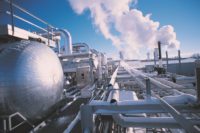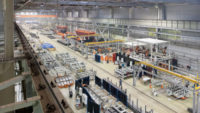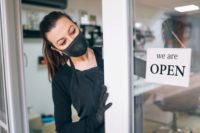Reopening and maintenance of plant and facilities operations can be safely achieved with proper resiliency planning aligned to business requirements and drivers, and a high degree of management and health and safety measures. This creates an environment to operate where employees, customers and visitors feel safe, comfortable and confident returning to work.
The establishment of temporary (or long-term) screening measures and diversions to meet social distancing requirements, that are monitored and managed digitally and aligned to business requirements, coupled with robust communication and education campaigns, are a cornerstone of creating and reinforcing trust with all stakeholders as part of the overall response to COVID-19.
-
Facility audits and production priorities. Determine sites and facilities to be re-opened and desired business and production levels and activities. Work with clients to set priorities. Perform an audit to understand demand conditions and site criticality to assess operation continuity. Rank by business criticality, safety considerations and site conditions.
-
Health and safety facility guidelines. Determine public health and governmental guidelines during COVID-19 business activities. Understand and define safety guidelines for the facility and ensure that all government guidelines are incorporated. Conduct an assessment as to what is currently in place versus what is required and then plan to close the gap. For example, secure Personal Protective Equipment (PPE), and consider the availability of future stock and potential for supply chain disruption that could occur during an increased risk level.
-
Employee health and safety policies. Develop a site-specific employee safety plan with policies and protocols for health screening, social distancing and contact tracing. Conduct and document health risk assessment and develop appropriate PPE guidelines. Importantly, modelling of worker movement will be critical to ensuring social distancing requirements tied to the specifics of the selected sites and facilities. These policies and processes should be constantly reviewed, and part of a continuous improvement strategy based on actual performance.
-
Facility safety plan, including scenario planning. Develop a playbook or at a minimum, a risk framework that summarize the facility safety plan by critical component by various risk level. Include the activities to be employed going from a smaller to an elevated risk level. Secure input from your stakeholders, which could include employees, unions, regulatory agencies, public health officials, contracted services, legal and risk. Test operating plan in lower risk facility to identify any gaps and modify plan, continue to evolve and update as more facilities become operational.
- Safely planning and monitoring. Evaluate the efficacy of the plan through scenario planning is critical. This should include all aspects of your operation. Are workers following the policy and procedures? Has there been a loss of productivity? How are workers overall wellness – including physical and emotional levels? Are you able to effectively respond to infections, trace contact and minimize impacts during rapid increases in infections?
-
Health screening and contact tracing. Health screening and tracing contact of workers is critical to reducing the spread of COVID-19. Minimizing the insertion of impact to critical operations that may be identified through either passive or aggressive wellness checks, including fever and elevated temperature assessments, is necessary. Consideration of the logistics of successfully performing the task is essential. If impacts are identified, performance of contact tracing to identify infrastructure and personnel exposed is fundamental to the control of the infection.
-
Social/physical distancing programs. Having the appropriate expertise, technology and data science to track, model, plan and implement effective social distancing in facility and manufacturing settings is critical. Evaluate plant floor layout and working patterns of facilities that can safely accommodate people flow and contact interaction. This will lead to better health, safety and industrial hygiene protocols.
-
Cleaning, disinfecting and decontamination. It is important to respond to possible impacts and the needed prevention to identify and clean needed infrastructure while maintaining manufacturing flow, worker confidence and product integrity.
-
HVAC systems. Infectious aersols can pose a high exposure risk, regardless of whether COVID is defined as airborne infectious disease. Evaluate and improve the design and operations of heating, ventilation and air conditioning systems and local exhaust ventilation (LEV) systems to decrease the transmission. Evaluate and develop strategies to minimize transmissions through ventilation systems including Dilution and extraction ventilation, pressurization, airflow distribution and optimization, mechanical filtration, ultraviolet germicidal irradiation and humidity control.
- Robust communications and stakeholder engagement. Timely, consistent, and targeted communication and engagement is critical to the successful deployment of any significant operations change. This should clearly articulate how a facility is going to operate but also be clear how workers, customers and other stakeholders should behave. Given the personal nature of health screening and the fear associated with the COVID-19 virus, a comprehensive communications and engagement program is imperative.



